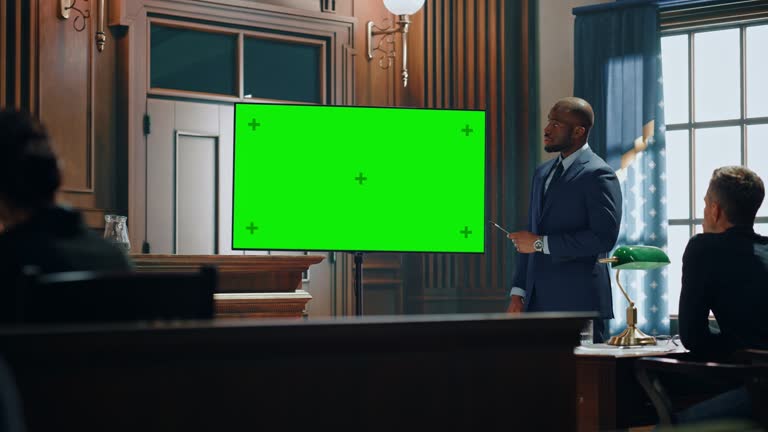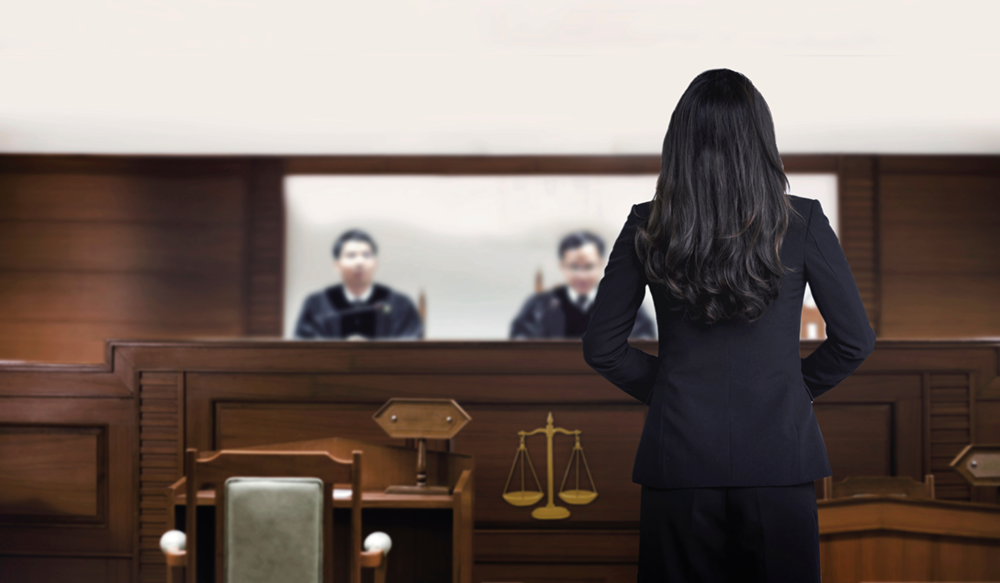How to Boost Your Situation with Engaging Trial Presentations: Professional Tips for Lawyers
How to Boost Your Situation with Engaging Trial Presentations: Professional Tips for Lawyers
Blog Article
Browsing the Intricacies of Test Presentations: Tips for Seamless Delivery and Compelling Debates
In the realm of legal proceedings, the art of trial discussion stands as a crucial factor of success. The complexities inherent in trial presentations need a fragile balance of skill, method, and skill.

Understanding Trial Goals
To properly browse a trial, it is critical to have a clear understanding of the objectives that need to be achieved. Before entering the court room, lawful teams need to define their goals and preferred outcomes. These objectives act as guiding principles throughout the test, forming strategies and affecting decision-making procedures.
Recognizing test objectives involves an extensive analysis of the instance, legal precedents, and the customer's benefits. Trial Presentations. It needs a thorough evaluation of the truths, recognizing vital concerns, and anticipating potential obstacles. By setting certain and measurable goals, attorneys can tailor their presentations and disagreements to straighten with the desired outcomes
In addition, a clear grip of test objectives allows lawful groups to focus on proof, witnesses, and lawful arguments effectively. It enables the advancement of a systematic narrative that reverberates with the discretionary, reinforcing the overall instance presentation.

Organizing Evidence Properly
Having a clear understanding of test objectives lays the structure for arranging evidence properly in lawful process. By straightening the presentation of proof with the wanted outcomes of the trial, legal groups can enhance their disagreements and enhance their persuasiveness.
An additional secret aspect in organizing evidence efficiently is establishing a sensible flow. Presenting evidence in a sequential and systematic way can help develop an engaging story that sustains the legal disagreements being made. Additionally, making use of visual help such as graphs, timelines, or graphes can better boost the organization of evidence and assist in making clear intricate relationships or series of events.
In addition, making certain that all proof offered is pertinent and permissible to the situation is crucial. Unimportant or inadmissible evidence can interfere with the stamina of the argument and potentially harm the integrity of the here and now party. A thorough evaluation and option procedure should be taken on to consist of only the most impactful and legally audio proof in the trial presentation.
Crafting Influential Narratives
Crafting engaging stories plays a critical role in offering convincing disagreements throughout legal proceedings. When constructing a narrative for a trial discussion, it is vital to develop a clear story that highlights key factors and attaches click here to read them in a systematic way. By weaving with each other proof, statement, and legal debates right into a natural and influential narrative, legal professionals can properly advocate for their customers and enhance the possibility of a positive result in the courtroom.
Grasping Visual Aids
Reliable usage of aesthetic help is crucial to boosting the influence and clearness of trial discussions. Aesthetic aids, when used strategically, have the power to streamline complicated details, reinforce key factors, and leave a long lasting perception on the court and jury. To grasp visual help in test presentations, it is critical to make certain that they are clear, succinct, and relevant to the arguments being made.
When integrating aesthetic aids, you can look here such as charts, graphs, timelines, or photographs, into a test presentation, it is vital to maintain them aesthetically appealing yet expert. The visuals ought to match the verbal debates, supplying a visual representation of the details being reviewed without overwhelming the target market with unneeded details.
Additionally, exercising with the visual help beforehand is crucial to make certain a smooth delivery during the trial. Familiarizing oneself with the material, transitions, and timings of each visual help can assist preserve the flow of the discussion and avoid technological problems that may arise.
Providing Impactful Closing Arguments
An engaging closing disagreement offers as the conclusion of a test discussion, encapsulating the core narrative and convincing the judge and jury in the direction of a positive choice. Begin by detailing the major disagreements that support your client's position, stressing why the proof presented throughout the test supports your narrative.
Furthermore, integrating psychological appeal can even more enhance your closing over here disagreement. Eventually, a well-crafted closing argument need to leave a long-term impact, engaging the court and jury to rule in your client's favor.
Final Thought
Finally, mastering test discussions entails recognizing goals, organizing proof, crafting narratives, utilizing aesthetic help, and delivering impactful closing debates. By executing these strategies successfully, legal representatives can offer their instance perfectly and make compelling disagreements in the court. It is important to navigate the complexities of trial discussions with precision and skill to accomplish success in legal proceedings.
By aligning the discussion of proof with the desired outcomes of the trial, legal teams can reinforce their disagreements and enhance their persuasiveness (Trial Presentations). To grasp aesthetic aids in trial discussions, it is vital to make certain that they are clear, concise, and appropriate to the disagreements being made
A compelling closing argument serves as the culmination of a trial discussion, encapsulating the core story and persuading the judge and court in the direction of a beneficial choice. Begin by laying out the main arguments that sustain your client's position, highlighting why the proof provided throughout the trial supports your story.In conclusion, understanding test presentations involves understanding objectives, organizing evidence, crafting narratives, making use of visual help, and providing impactful closing disagreements.
Report this page